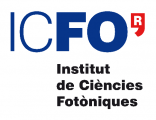| Two articles co-authored by ICFO’s Medical Optics Group in Britton Chance 100th Commemorative issue. | |||||
|
The journal Academic Radiology has recently celebrated what would have been the 100th birthday of the famous multidisciplinary scientist, Prof. Britton Chance, by printing a special issue focused on in vivo human applications with direct or future use in diagnosis. In this special edition, the Medical Optics group led by ICFO Professor Turgut Durduran has published two co-authored papers related to diffuse correlation and optical spectroscopy.
To commemorate the legacy of Prof. Chance’s discoveries related to enzyme kinetics (how the body makes, stores and uses energy), in vivo MR spectroscopy, and near-infrared spectroscopy and imaging, the University of Pennsylvania organized an International Symposium in honor of the legendary scientist. The journal Academic Radiology printed a special issue containing scientific contributions presented during this conference. In the first study, ICFO’s Medical Optics group, in collaboration with Hospital de la Santa Creu i Sant Pau in Barcelona, explored the feasibility of near-infrared spectroscopy (NIRS-DOS), diffuse correlation spectroscopy, and transcranial Doppler ultrasound to study macrovascular and microvascular cerebrovascular reactivity in severe internal carotid artery steno-occlusive lesion patients, and explore its potential to evaluate future risk of suffering ischemic strokes. The second study is collaboration between ICFO and Prof. Arjun Yodh’s research group at University of Pennsylvania where they have used diffuse optical and diffuse correlation spectroscopies to measure the concentrations of oxygenated and deoxygenated hemoglobin, lipid, water, and microvascular blood flow under a wide range of compressive loads in human breast mammography treatments. As a result, they were able to determine how imaging techniques which depend on endogenous blood contrasts, are affected by breast compression during imaging.
|
||||


